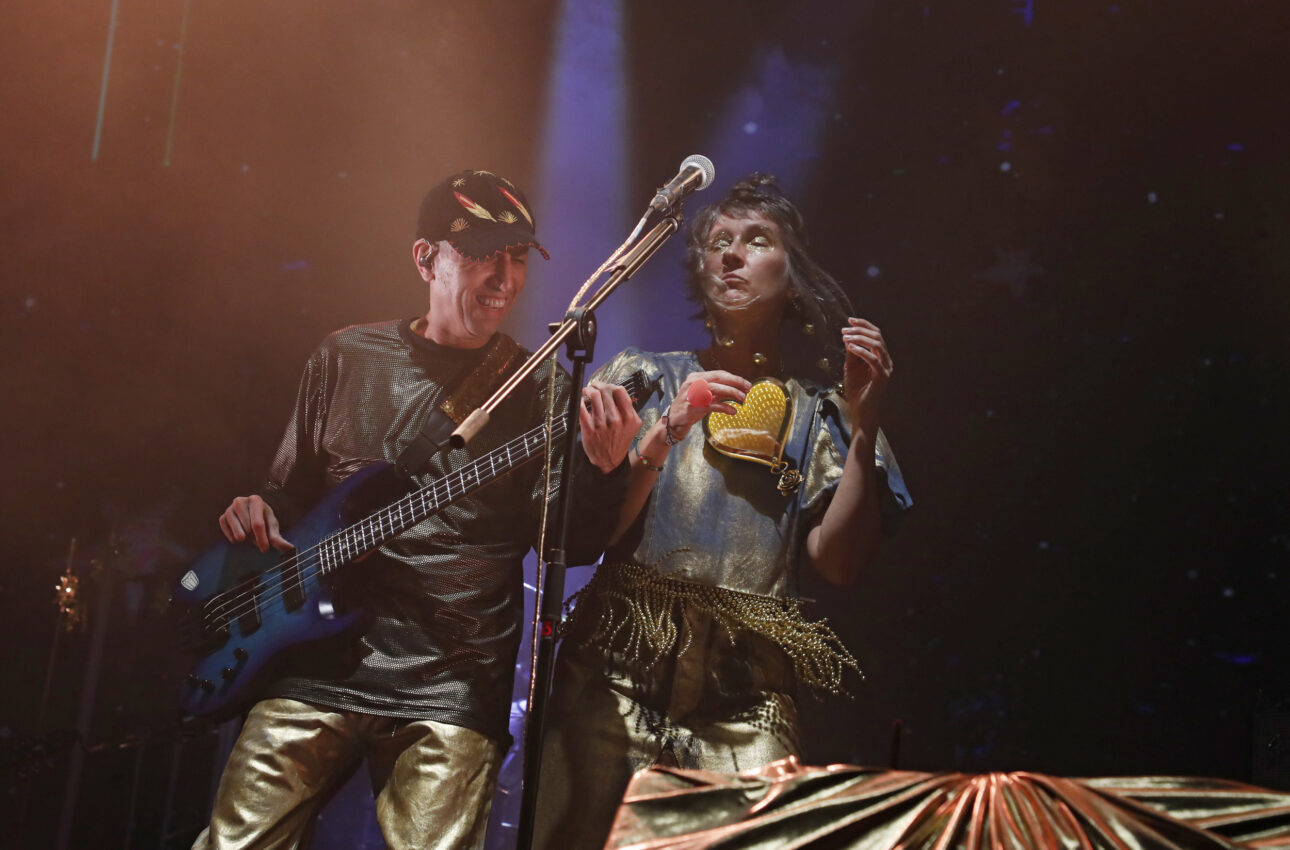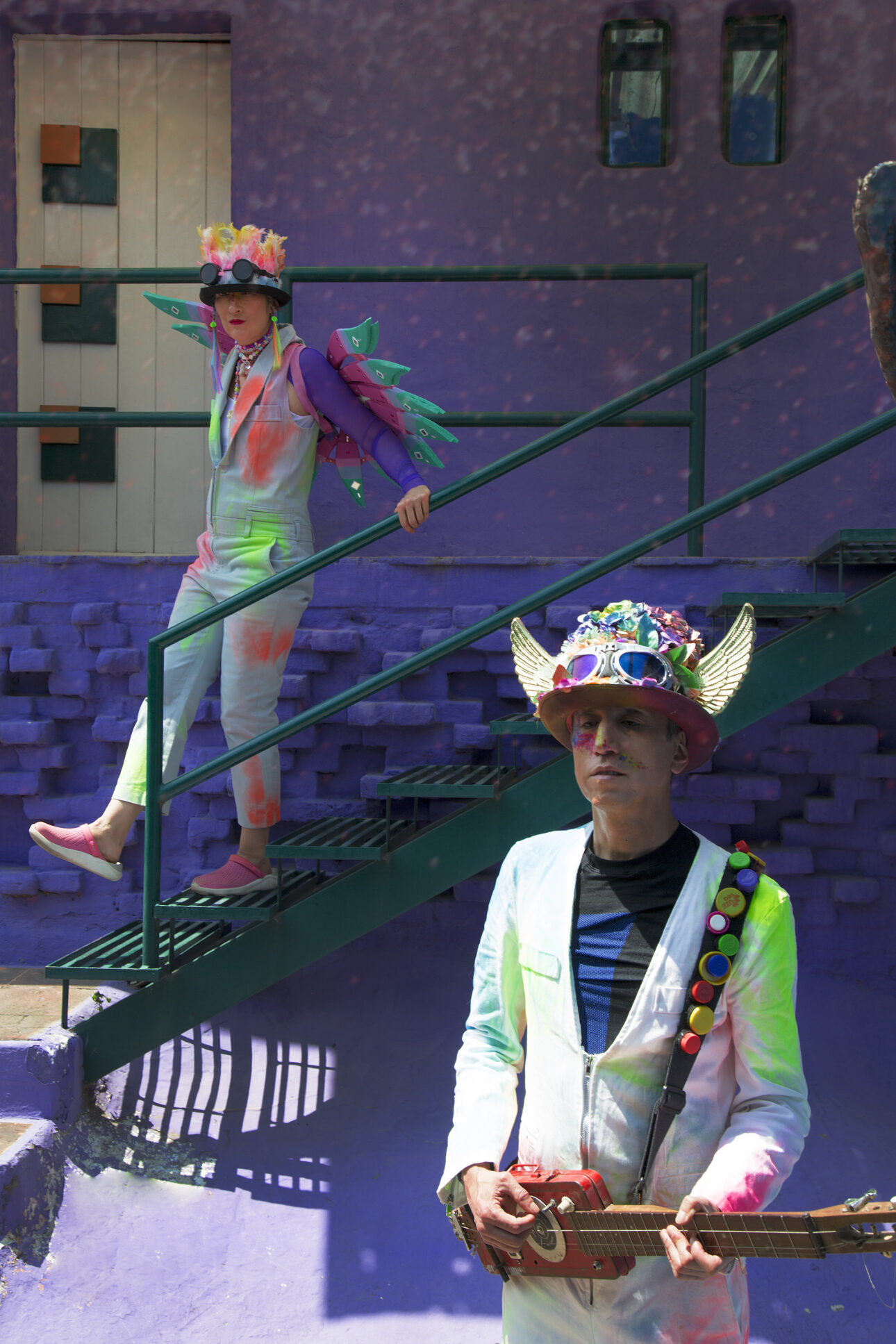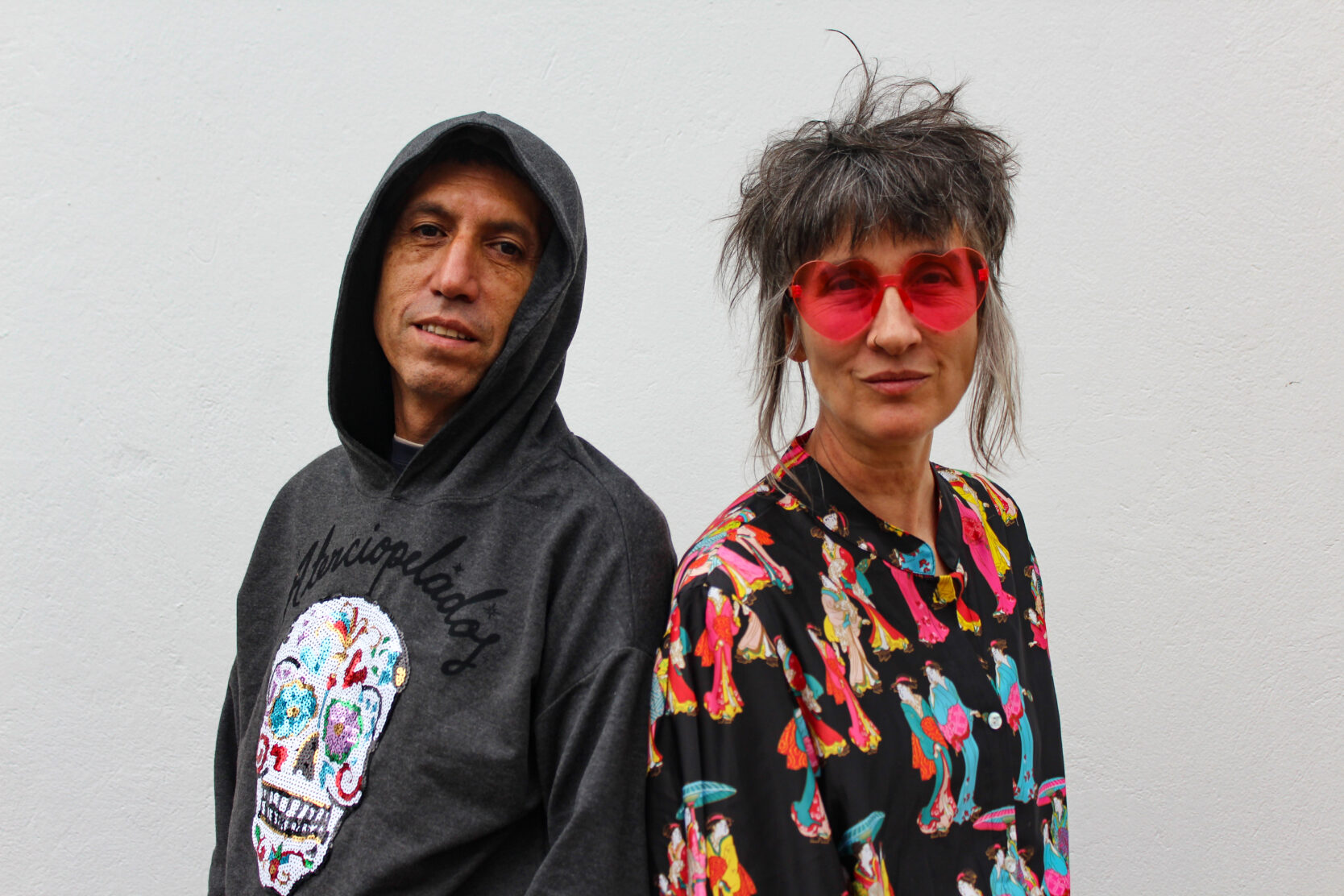In the early ’90s, life in Bogotá was periodically disrupted by car bombs and other violence in the war between Pablo Escobar and the Colombian government. The country was in the grip of some of the worst violence of its long internal conflict. Civilian casualties and disappearances were commonplace. Andrea Echeverri, lead vocalist of Aterciopelados, remembers the era well. For her, as well as her musical partner Héctor Buitrago, the days of fear and bombs were the catalyst for wild creativity, almost out of necessity.
“We felt that we could die at any moment. You could hear the bombs, and you felt that. But because of that, it was like a breeding ground. We partied a lot. And we wrote a lot of songs and we created spaces to get together,” she recalls.
Buitrago, born and raised in the Restrepo neighborhood of the city, was the bassist of the pioneering hardcore band La Pestilencia. Echeverri, also a Bogotá native, was a ceramicist, who recently graduated with a fine art degree from The University of the Andes. They fell in love and started making music.
The romance ended long ago, but their creative relationship has survived for more than 30 years. They’ve made 11 albums together, not counting solo projects, and won four Latin Grammys. This year, Echeverri and Buitrago, who plays bass, are celebrating the 28th anniversary of their 1995 album El Dorado. (The group was initially preparing to celebrate the 25th anniversary of the album when the pandemic put their plans on hold.)
Anniversary festivities include a live version of the record, out March 15, and a North American tour. This is why they are both on a video call with SPIN, talking about the old days. El Dorado, their sophomore album, instantly shook up the music in Colombia with its mix of punk energy and distinctly Latin-American sounds: Afro-Colombian rhythms, folk undercurrents, and a ranchera for good measure.

Colombia at that time was “a very conservative place,” Echeverri says. “When you had weird clothes or something everybody looked at you,” she explains. To have a place to play and explore the music they were interested in, the duo had to make one themselves. The punk and the avant-garde artist started playing together as a band called Delia y los Aminoácidos. Many of their gigs took place in Barbarie, a now legendary bar/venue that Buitrago and Echeverri opened and closed in 1990. “That’s how we started playing: In the bar. We were serving drinks, getting drunk and playing,” Echeverri says with a laugh. Barbarie was one of the only rock venues in the city and became a hub for anyone interested in alternative music. “We gave permission to everybody to be weird,” she says of their scene. Though Barbarie was short-lived, the duo opened a series of similarly fugitive clubs, including Barbie, Vena Arteria, Transilvania, and Kaliman. One had to be closed down following a particularly lively Manu Chao concert.
By 1992, Aterciopelados had officially formed as a four-piece and in 1993, they had an unlikely hit with the demo for their song “Mujer Gala.” The surreal nugget of feminist pop-punk went to number one on the radio charts in Colombia. It was the first of many hits for the band and landed them a record contract with BMG. When their debut album Con el corazón en la Mano followed the same year, Aterciopelados found themselves leading a movement of homegrown alternative rock. It was a moment when their generation of Colombians was aching for some anthems to claim for themselves. They found them in the experimental fusions of El Dorado, with “Florecita Rockera,” “Bolero Falaz,” and “Sueños del 95” topping the list.
The album’s sound developed from their collective desire to do something new, and do it as Colombians. Buitrago was fed up with the violence of the punk scene and craved something different. He got an inkling of what he was looking for while on tour in Europe. “I saw The Sugarcubes in Germany,” he says with reverence. Echeverri picks up his story, continuing, “He was saying he wanted something, not like Sugarcubes, but something unique that reflected who we were. We wanted to dress up, to talk, and to sing like Bogotanos.” On their second album their explorations came out as a swirl of melodic hard rock that pulled in ska, reggae, one bolero, and anything else in its path. The lyrics dealt with social issues, the poverty of rural farmers and the disappearances of people the government considered undesirable. The song “Colombia Conexión” wrestled directly with their sense of national identity, while envisioning a brighter future already sprouting in the fertile soil.

El Dorado arrived right on time and connected. It had a sound in which Bogotanos, and other Colombians, could recognize themselves. Echeverri explains: “The environment was ready for it. The radio stations wanted alternative rock like that, with roots. That’s what everybody wanted, identity.”
Aterciopelados were different. They gave high school kids something they could sing along to with their whole hearts. The spirit of the album immediately began inspiring the next generation, and today their influence is claimed by alternative acts such as Bomba Estéreo and Monsieur Periné, both of whom draw on uniquely Colombian musical styles.
Since 1995, Aterciopelados themselves have continued to expand their vision over several more albums, incorporating electronic and hip-hop elements on 1998’s Caribe Atomico, and they’ve built an international following, while aging gracefully into the role of cultural icons at home. They found non-musical life partners and started families. They broke up as a band for a time in the ’10s and started solo projects, but reunited and got back to writing music together before long. Despite everything, Buitrago feels not much has changed. “We’re the same people. The difference? We have kids and we have 11 albums, but we’re the same people,” he insists. “It’s a bit boring,” Echeverri observes.
The longtime collaborators have maintained their socially conscious outlook. If anything, they’ve become more outspoken, creating art and otherwise using their voices to advocate for women’s rights and environmental protection. They’ve also stayed musically restless. Their last full-length was 2021’s Tropiplop, but, ever prolific, they’ve continued to release new songs up to the present.
Buitrago and Echeverri share songwriting responsibilities and Echeverri believes it is the strange balance in their creative friendship that keeps things going. “We love each other. We are so different, him and me. We have an album called Claroscura because he’s always so bright and positive, and I’m the dark one,” she says with a smile. That said, it’s clear a shared passion for music sustains both artists and fuels their long alliance. “Music is that place where you feel young again and capable of new things, and capable of transforming reality,” Echeverri muses.




